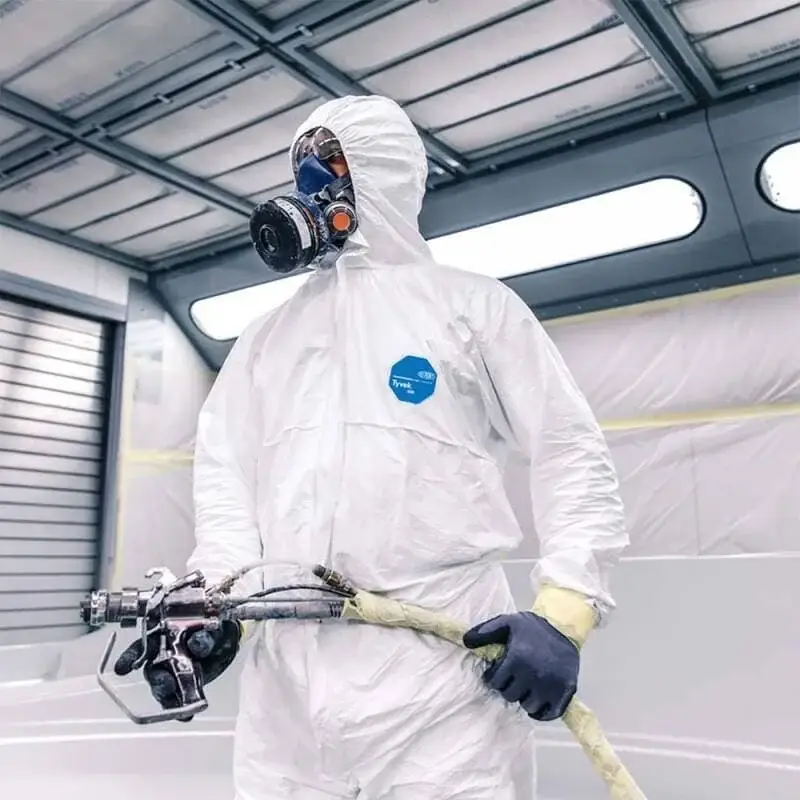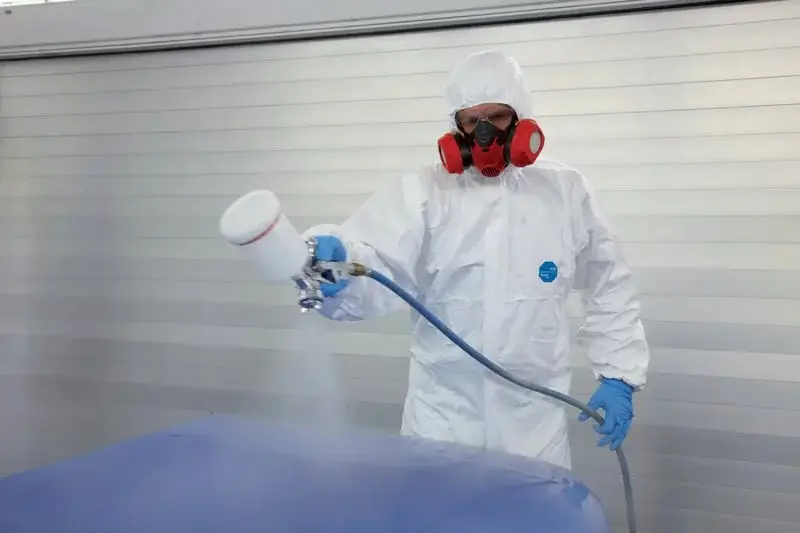Table of Contents
Used disposable gowns often carry contaminants that can spread health risks if not discarded properly. Knowing where to place a disposable gown after use helps keep everyone safe and clean. This guide covers best practices for handling used disposable gowns, from identifying safe disposal areas to understanding how proper waste management reduces contamination and protects public health.
This section walks you through responsible disposal steps. You’ll see why placing used gowns correctly is vital, where they should go, and how these actions make workplaces and environments safer.

Importance of Proper Disposal of Used Disposable Gowns
Infection Control
Used disposable gowns can carry pathogens like viruses and bacteria, so proper disposal is essential to stop infections from spreading. This is especially important in high-risk areas such as hospitals and nursing homes, where poor disposal practices can have serious effects. For example, during the COVID-19 pandemic, improper disposal led to the spread of SARS-CoV-2 among healthcare workers and patients, showing the need for strict infection control. (State of Washington)
To reduce risk, place all used disposable gowns immediately in designated biohazard bags or containers after use. This simple action helps contain pathogens and reduces the chance of contamination among staff and patients.
Environmental Safety
Improper gown disposal can increase infection risks and harm the environment. Treat contaminated gowns as medical waste by placing them in biohazard bags to protect waste management workers and the public. For example, gowns exposed to hazardous materials can be dangerous if not properly handled.
Follow current waste management protocols to avoid unintended contamination, protect ecosystems, and help keep communities safe.
Regulatory Compliance
Many regions have specific rules on medical waste disposal, including PPE like disposable gowns. These rules are not just guidelines; they are legal requirements. By following these regulations, facilities uphold best practices and meet public health responsibilities. Ignoring these rules can lead to penalties and puts community health at risk.
Ensure your facility’s disposal methods meet the standards set by local health departments and environmental regulations. Staying updated on these guidelines is also vital, as health and environmental standards evolve with new challenges. (Enviro Guard)
Preventing Contamination Risks
Proper disposal protocols are key to reducing contamination risks, especially when removing and handling gowns. Ignoring these practices can lead to self-contamination. Training staff on safe removal and disposal methods is essential to lowering this risk. For instance, mishandling gowns during removal can transfer pathogens to the wearer or nearby surfaces.
Regular training sessions reinforce safe practices, reducing lapses in high-stakes settings where even small mistakes matter.
Public Health Responsibility
Correct gown disposal goes beyond individual protection; it’s part of a larger public health effort. With global health challenges like pandemics, every facility plays a role in controlling outbreaks. Safe disposal practices directly support these efforts, helping healthcare facilities prevent secondary contamination sources.
By following proper disposal standards, your facility protects healthcare workers and the community, playing a crucial role in public health during regular operations and crises. (CDC)
Disposal Guidelines for Disposable Gowns
Disposable gowns are for one-time use only. Reusing them raises the risk of cross-contamination. After each use, discard gowns promptly to maintain a safer environment.
Choose the Right Location for Disposal
Dispose of a gown in a covered trash container after use. For safety, remove the gown in a designated area, like inside the patient’s room or just outside of it. This prevents contaminants from spreading to hallways or common areas, lowering exposure risk.
6 Steps to Remove A Disposable Gown
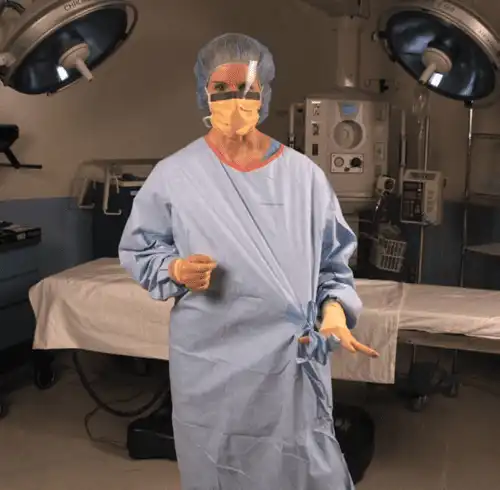
1. Untie or break the outside tie with your gloved hands.
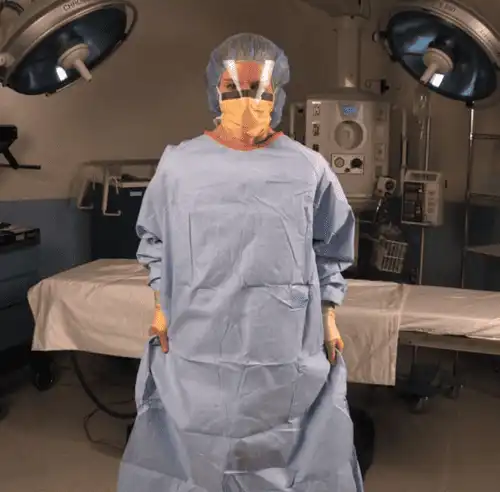
2. Grab the gown at the waist and pull it gently away from your body to break the ties inside your waist.
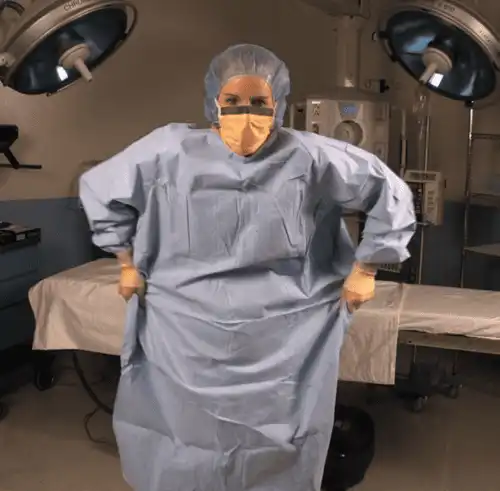
3. Grab the shoulders of the gown, and break the velcro or tie closure at the neck.
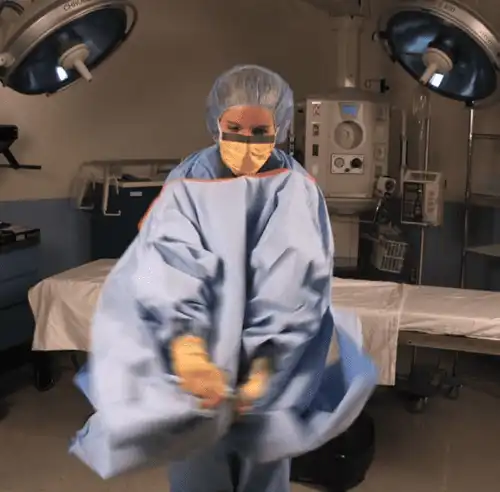
4. Lift your elbows, and roll the gown down from the shoulders.

5. Fold the contaminated side inward, and avoid touching the contaminated surface.
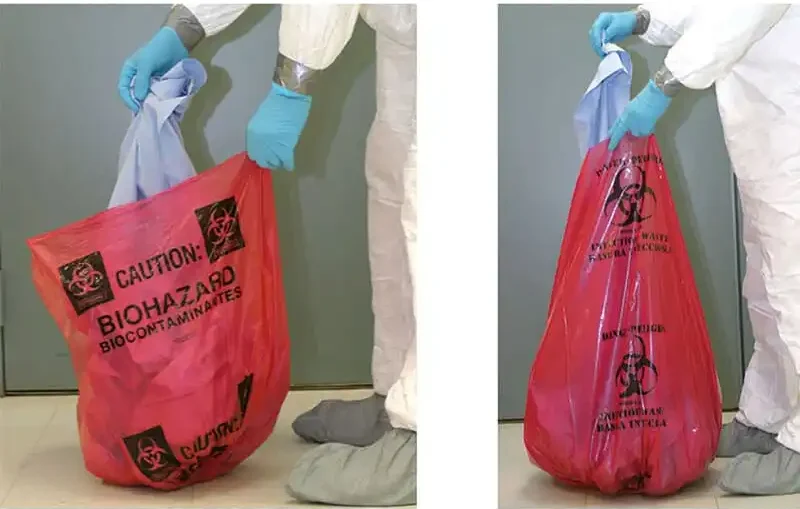
6. Proceed to dispose of the gown, bag the gown and put it in a covered trash container.
Proper Placement of Used Gowns
-
Fold the gown so that the contaminated side is inside. This keeps fluids or contaminants within the folds, reducing exposure.
-
If the gown is contaminated (e.g., with bodily fluids), place it in a red biohazard bag. This bag is sealable and marked for medical waste, ensuring pathogens are contained during disposal.
-
For low-risk gowns with no contamination, they can go with regular waste but should be bagged first. This adds extra protection for custodial staff handling the waste.
-
Ensure the disposal container is covered to prevent accidental exposure and limit airborne particles from spreading.
Key Considerations
-
Check for Contamination: If the gown was exposed to bodily fluids or blood, treat it as hazardous waste to avoid contamination risks.
-
Protect Yourself: When handling used gowns, wear personal protective equipment (PPE) like gloves to stay safe from contaminants.
-
Avoid Loose Disposal: Never dispose of used gowns loosely in bins. Always bag them securely to protect waste handlers.
-
Follow Local Rules: Medical waste disposal is regulated, and local rules may vary. Always check local requirements for handling infectious or hazardous waste.
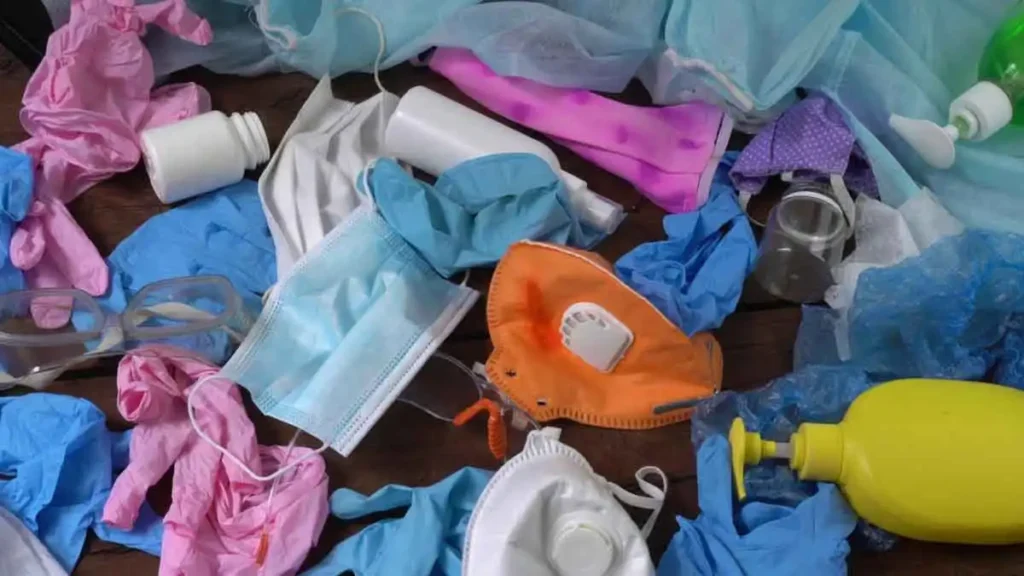
Environmental Concerns with Disposable Gowns
Landfill Impact
Disposable gowns made from nonwoven materials, such as polypropylene, take over 200 years to break down in a landfill. This means each gown discarded today might not decompose fully until 2224. The environmental impact is huge. Landfills are already overflowing, and in 2018 alone, the U.S. sent about 17 million tons of textile waste to landfills. Adding disposable gowns to this pile shows the excessive waste single-use medical textiles bring to healthcare.
Plastic Waste
Plastic waste isn’t just an environmental term—it’s a real issue, and disposable gowns contribute to it. Hospitals generate between 6,800 and 10,000 kg of plastic waste annually just from nonwoven surgical gowns (PubMed). Now think of the scale across all global healthcare facilities. This plastic waste doesn’t disappear; it leaks into ecosystems, affecting wildlife and adding to persistent pollution.
Water Pollution
Surprisingly, 20% of global clean water pollution comes from the textile industry. Toxic chemicals enter our water systems from dyeing and finishing processes. Though disposable gowns aren’t major offenders during use, they belong to a water-intensive industry. Each gown adds to the larger water pollution problem.
Greenhouse Gas Emissions
The environmental cost of disposable gowns isn’t just landfill waste or plastic; it also includes greenhouse gases. Making these gowns is an energy-heavy process, creating a high carbon footprint for healthcare facilities that rely on them. As the demand for disposable gowns grows, so do emissions, worsening healthcare’s climate impact.
Limited Recycling Options
Recycling disposable gowns is challenging. Only a small portion of used textiles get recycled effectively; most are incinerated or dumped. Medical textiles, in particular, have low recycling rates due to contamination risks and material complexity. This means most disposable gowns end up in landfills.
Microplastic Pollution from Synthetic Textiles
A hidden problem with disposable gowns is microplastics. When synthetic textiles like polypropylene break down, they release microplastics into the environment. These tiny particles end up in oceans and marine food chains, posing risks to wildlife and human health.
Proper handling of used disposable gowns is essential for maintaining hygiene and safety. Correct disposal helps prevent contamination and keeps workspaces safe. If you have questions about Where Should A Disposable Gown Be Placed After Use, feel free to reach out. With over 20 years of experience as a reliable disposable gown manufacturer in China, we’re here to support your sourcing needs and answer questions about proper disposal and gown management.

